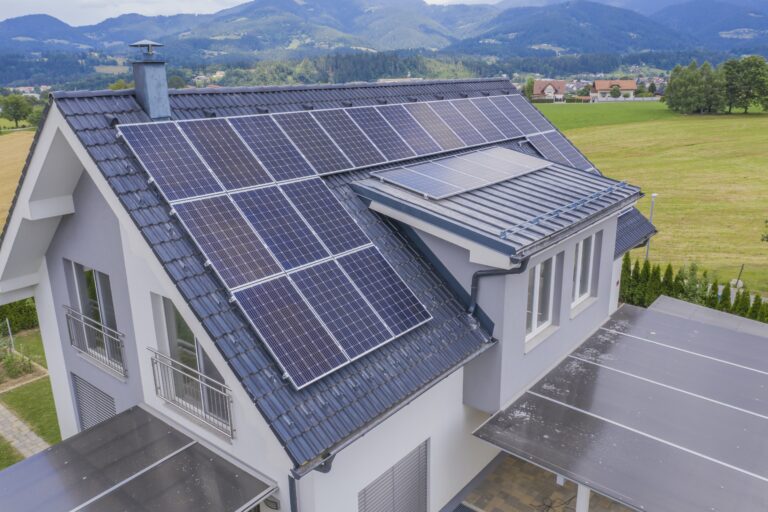Australia has the highest per-capita uptake of rooftop solar in the world — and with EV ownership on the rise, many homeowners are wondering: Can my solar system fully power my electric vehicle?
It’s an appealing idea: clean, renewable energy from your roof directly fueling your transport. But how realistic is it? Let’s break down the numbers, scenarios, and practical considerations to see whether rooftop solar alone can reliably charge your EV.
—
Table of Contents
- The Aussie Rooftop Solar Boom
- How Much Energy Does an EV Use?
- How Much Energy Does Your Solar Produce?
- Daylight Hours vs. Charging Hours
- Using Battery Storage to Bridge the Gap
- What if You’re Not Home During the Day?
- Smart Chargers and Solar-Only Modes
- Real-Life Scenarios and Case Studies
- Tips to Maximise Solar-to-EV Efficiency
- Conclusion
—
1. The Aussie Rooftop Solar Boom
Australia now boasts over 3.6 million rooftop solar systems, covering around 1 in 3 households. With feed-in tariffs declining and EVs gaining momentum, more Australians are eyeing self-consumption — especially powering their EVs with surplus solar.
It’s a compelling synergy: one investment (solar) supporting another (your car). But like all things energy-related, the reality depends on timing, scale, and tech.
—
2. How Much Energy Does an EV Use?
To understand if your solar can power your EV, start with the car’s consumption. On average:
- Most EVs consume around 15–20 kWh per 100 km.
- The average Aussie drives ~35 km per day.
- That’s roughly 5–7 kWh of electricity required daily for an EV.
So if your EV is your primary car, you’ll need around 150–210 kWh per month just for driving.
—
3. How Much Energy Does Your Solar Produce?
Solar system outputs vary based on size, season, orientation, and location. Rough ballpark:
- A 6.6 kW system in Sydney produces ~25–30 kWh per day in summer, ~15–20 kWh in winter.
- That’s over 9,000 kWh per year in ideal conditions.
So yes — if you’re only using 5–7 kWh per day to charge your EV, and your home’s solar output exceeds that, it’s theoretically possible to run your car entirely on sunshine.
But…
—
4. Daylight Hours vs. Charging Hours
Here’s where reality kicks in: solar panels generate power during daylight hours. Most EV owners, however, charge overnight — when they’re home and electricity is cheaper.
If your EV is parked at work or out on errands during the day, your solar panels aren’t powering it directly unless you have:
- A home battery system to store excess solar for nighttime use
- A smart charger that schedules charging based on solar availability
- Workplace charging powered by your employer’s solar
Without these, your excess solar is sent to the grid during the day — and you may need to buy power back later to charge your EV.
—
5. Using Battery Storage to Bridge the Gap
Adding a home battery (e.g., Tesla Powerwall, sonnen, BYD) allows you to store solar generated during the day and use it to charge your EV at night.
Typical battery capacity: 10–13.5 kWh
Typical EV charging need per day: 5–7 kWh
So with the right-sized solar + battery system, yes — you can use stored solar to charge your car overnight, making you functionally solar-powered.
However, home batteries are still a significant upfront investment.
—
6. What if You’re Not Home During the Day?
If you work 9–5 and park your EV elsewhere, you may miss the opportunity to directly solar-charge. Solutions include:
- Daytime charging at home (e.g., hybrid work or weekends)
- Public solar-powered chargers (still limited in Australia)
- Workplace chargers powered by rooftop PV (becoming more common)
Without one of these setups, you’re not truly charging from your own solar unless you have a battery.
—
7. Smart Chargers and Solar-Only Modes
New-generation EV chargers (e.g. Zappi, Fronius Wattpilot, Wallbox Pulsar Plus with solar integration) allow solar-aware charging.
Features include:
- Charging only when surplus solar is available
- Dynamic control to ramp up/down based on solar output
- App integration to monitor real-time usage
With the right charger, even without a battery, you can ensure your EV uses only solar power — when conditions allow.
—
8. Real-Life Scenarios and Case Studies
Let’s look at two examples:
🔋 Julia in Brisbane
- 6.6 kW solar, no battery, works from home
- Charges her Nissan Leaf at 11 am daily
- Her EV is 100% solar powered
🔌 Michael in Melbourne
- 10 kW solar, 13.5 kWh Powerwall, works in-office
- Charges Tesla overnight from stored solar
- Uses ~70–80% solar for EV charging over the year
These examples show it’s possible — but system design and lifestyle matter.
—
9. Tips to Maximise Solar-to-EV Efficiency
- Size your solar for both home + EV usage
- Shift EV charging to daylight hours when possible
- Use smart chargers with solar integration
- Consider a home battery for overnight charging
- Monitor your system’s output and usage with an app
- Schedule energy-intensive charging for sunny days
—
10. Conclusion
Can rooftop solar alone power your EV? In many Australian homes — yes, absolutely. But it depends on when you charge, how much you drive, and whether you store your solar.
If you align your habits and tech right, you can drive on sunshine most (if not all) of the time — cutting your fuel bills and carbon footprint dramatically.
—
Is it possible to power your electric vehicle entirely with rooftop solar? We crunch the numbers, explore real-life setups, and reveal what’s realistic for Aussie EV drivers.
